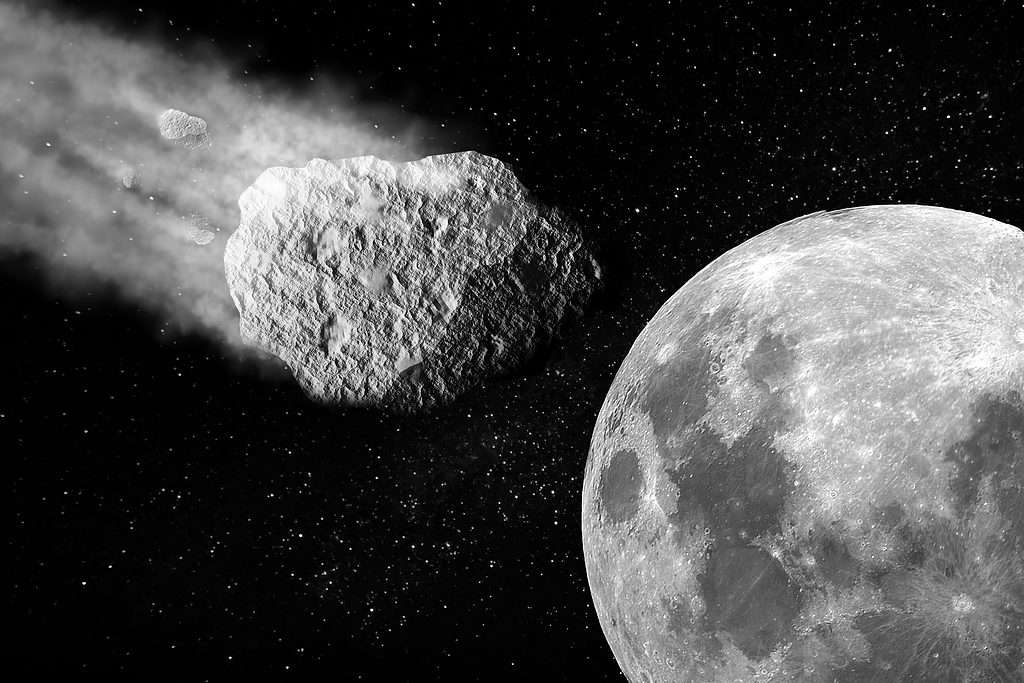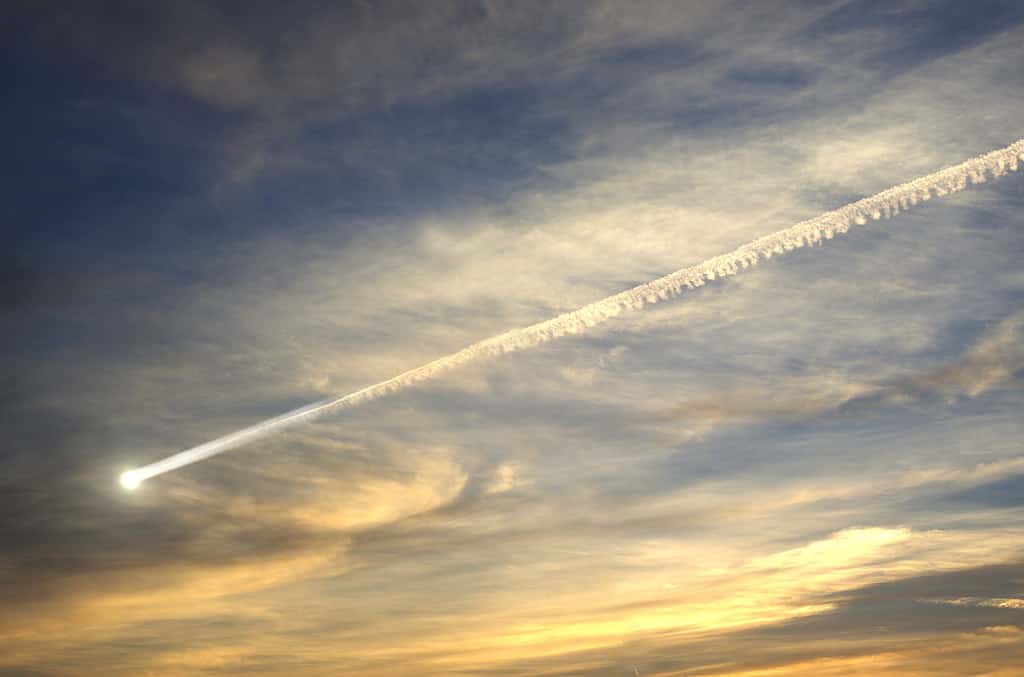When you look up to the night sky, there’s a chance you’ve seen an object hurdling through space, and these flying objects could be asteroids or meteors. Many of us often categorize asteroids and meteors as the same thing. However, NASA has found that there are a few differences between asteroids vs. meteors differences.
While they all look similar at first, they are quite different in material composition and how they interact with the planets around them. As a basic rundown, asteroids are bigger pieces of rock or metal that get caught in an orbit. At the same time, meteors are small fragments of asteroids that break apart when they reach Earth’s atmosphere.
As you can see, there are some key differences between the two. If you still need clarification, don’t worry. We will cover those differences between asteroids and meteors below.
What Is an Asteroid?

An asteroid hurling through space and is about to hit the Moon.
©Marti Bug Catcher/Shutterstock.com
When we think of an asteroid, we tend to think about a large rock about to strike the Earth. However, this is different because a few set aspects set apart an asteroid from a meteor. An asteroid is a small rock that gets stuck in the orbit of another planet.
In most cases, this is either the sun, Mars, or Jupiter. Despite this, most of the time, asteroids don’t come close to the Earth. Only when they collide or break away from each other and are sent off into space does an asteroid have a chance to become close to Earth.
Asteroid Composition and Material Types
Substances that an asteroid is made from are generally clay and silicate rocks. Despite that, there are different classifications based on composition. In total, there are three different types, including C-type, S-type, and M-type.
Here is a quick overview of the different composition types:
- C-type (Chrondrite) – Chondrite is the most common asteroid of silicate and clay. They are generally dark in appearance and are made of ancient materials.
- S-type (Stony) – Stony asteroids are made from silicate and nickel-iron materials.
- M-type (Metallic) – Metallic-type asteroids are made of nickel and iron. They are formed differently depending on how far away from the sun. Those formed closer to the sun become more iron, while the others are less refined.
Asteroid Classifications
Aside from asteroid composition, there are also classifications. Classifications refer to where and how an asteroid orbits. We know this is a bit confusing, so we will create a quick summary of the different types below:
- Asteroid Belts – Asteroid belts are the ones that mainly orbit two planets. This includes the closest to us, between Mars and Jupiter. The asteroids that get stuck between two orbits end up colliding with one another, which causes them to vary in size.
- Trojans – On the other hand, trojans share ab orbit was a large planet. These asteroids do not collide with one another but instead rotate around the planet’s gravitational pull.
- Near-Earth Asteroids – These pass by Earth but don’t get stuck in their gravitational pull. Instead, the asteroid passes by without entering Earth’s atmosphere.
What Is a Meteor?

A meteor entering Earth’s atmosphere.
©Krasowit/Shutterstock.com
When it comes to asteroid vs meteor, a meteor is a small “rock” made of materials that enter the Earth’s atmosphere. The solid piece of debris has broken through Earth’s atmosphere and either hit the ground or broken apart before then. They are often spotted in the night sky and look like a streak of light passing by. If you know what a shooting star looks like, you’ve likely seen a meteor shooting into Earth’s atmosphere.
Meteor Size
Most of the time, we often think of a meteor as a large rock falling into the Earth’s atmosphere. While this technically isn’t false, meteors come in all shapes and sizes. Some meteors are only the size of a small grain of sand, while others are small rocks.
Meteor Terms and Definitions
One reason people get confused while talking about asteroids and meteors is that there are different terms that scientists use to describe meteors. Due to this, it can become complicated to tell them apart. Below, we’ve created a summary of each term:
The first term you should understand is a meteoroid is a small object or “rock” that travels through space. However, it becomes a meteor when it enters the Earth’s atmosphere. Once it hits the Earth’s ground, it’s considered a meteorite.
Asteroids vs. Meteors: The Difference

Halley’s Comet shooting across the night sky.
©Brian Donovan/Shutterstock.com
Now that we’ve covered what asteroids and meteors are let’s discuss asteroids vs meteors and how they differ. Asteroids might be difficult to distinguish from meteors because the terms are interchangeable depending on where it’s located in space.
An asteroid is a term used when a small floating “rock” orbits a planet or moves in space. When an asteroid moves or breaks down and enters Earth’s atmosphere, it becomes a meteor. For example, an asteroid will float around the sun and break off. Once the broken part travels close enough to Earth and enters the atmosphere, it becomes a meteor.
The Bottom Line
As you can see, when it comes to asteroids and meteors, they are technically the same. The main difference is the distance the asteroid is from Earth’s atmosphere. So, even if you can see the passing-by asteroid, it isn’t a meteor just yet! When it passes through Earth’s atmosphere, it becomes a meteor.
The photo featured at the top of this post is © Triff/Shutterstock.com
Thank you for reading! Have some feedback for us? Contact the AZ Animals editorial team.







